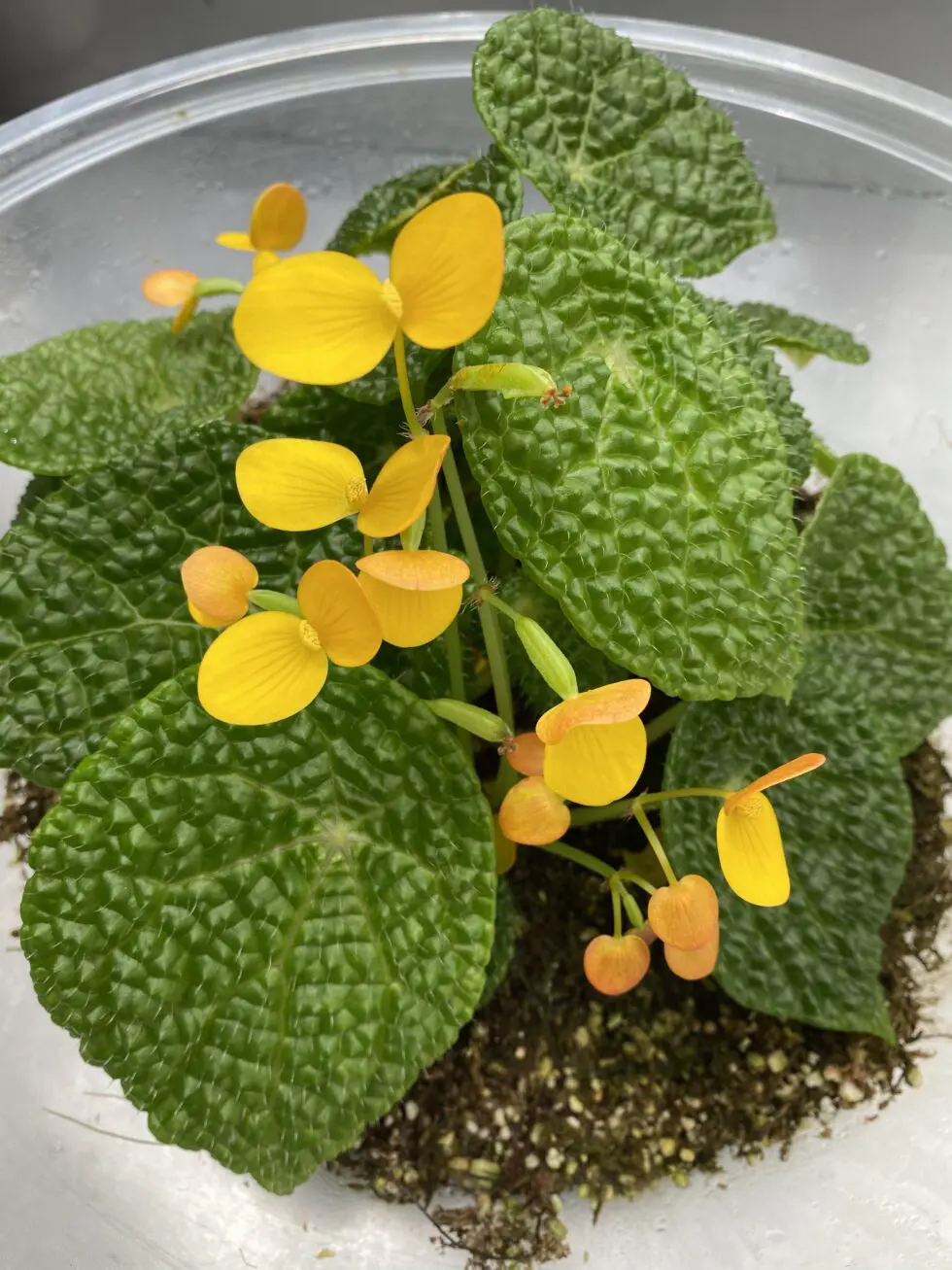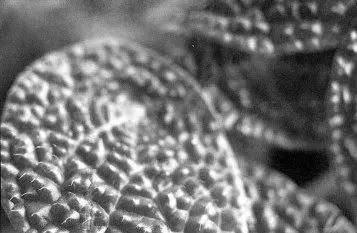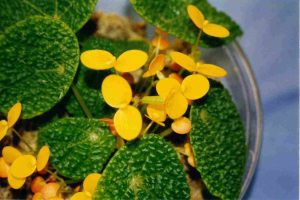B. ficicola was discovered by James Dundas, a forestry officer, on December 6, 1946 at the base of Ekumbe Ndeme waterfall on the Meme River in Nigeria. It was found growing on a ficus. Dr. Degar Irmscher, Professor of Botany at the Hohenheim Agricultural College, published the original citation in 1954 in Botanische Jahrbucher, and chose the name ficola (feye-sik’-oh-luh), meaning fig-loving.
B. ficicola is in the section Scutobegonia, and has 34 chromosomes. It is classified as rhizomatous, distinctive foliage, unusual foliage/unusual coloring, medium-leaved. Flowers are yellow, sometimes tinged with red.
It is necessary to grow B. ficicola in an enclosed environment unless you can maintain humidity of at least 70%. I have grown this begonias for many years, and find it easy to grow. My plant produces blooms spring, summer, and fall, only giving up in the very cold winter.
B. ficicola is also easy to self-pollinate, but a problem arises in trying to retrieve the seed. If you wait until the seed pod is fully ripened, the seeds become cemented within the pod, making them almost impossible to remove. According to Michael Kartuz, the seed should be removed from the pod just as the tip of the pod becomes brown.
Growing Medium: I like to use long grain sphagnum moss and perlite mix in terrariums. My recipe is:
- use 5 parts sphagnum moss to 1 part perlite
- soak the moss in hot water (15 minutes should be sufficient)
- squeeze all excess moisture from the moss
- cut the moss in pieces 1 to 2 inches long
- mix in the perlite
- place about 1/2 inch of perlite at the bottom of the container before putting in the mix
- center the plant in the container (this is an important point in judging closed containers)
After planting your container, leave the top partially open for one or two days; this will allow excess moisture to evaporate from the top of the growing medium, and there will be less chance of mildew or root-rot. It too much moisture still remains when the top is completely closed, I would suggest leaving a small air vent until the condition clears up.
Light: B. ficicola likes bright indirect light. Do not put your container in the sun, as you can cook your plant. If leaves start to yellow, you plant is getting too much light. This is one of the begonias the Thompsons recommend growing under fluorescent lights.
Water: I the growing medium appears dry and there is no condensation on the wall of the container, trickle a small amount of warm water into the container (a baster can also be used).




